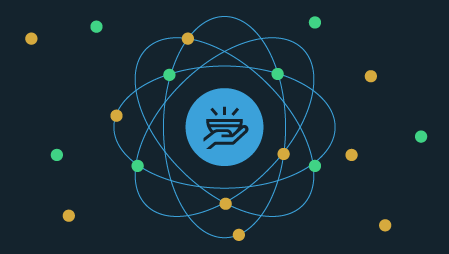Ready to learn Internet of Things? Browse courses like Cyber Security for the IoT developed by industry thought leaders and Experfy in Harvard Innovation Lab.
Whether it’s smart wearables, connected cars and machines, consumer electronics or smart city deployments, there is no denying the internet of things is growing at an increasingly rapid rate. According to the latest industry reports, the number of connected devices will reach more than 20 billion by 2023, a figure which represents a huge opportunity for service providers.
However, yielding this opportunity in the correct way to create true value for enterprise and consumers while ensuring a safe and secure experience does not come without challenges. Addressing these is not something that device providers, service providers or application developers can ignore in their IoT strategies — but there is a solution.
Safe and secure
As technology advances, issues surrounding cybersecurity increase, making this one of the biggest prohibitors to mass IoT adoption as new security challenges, requirements and issues arise with each deployment.
Due to the nature of the sensors and actuators IoT integrates — which directly impact peoples’ living and working environments in the real world — those operating in the IoT chain can no longer put security on the backburner. This is particularly true in industrial environments, where security glitches could present safety concerns that have never been contemplated before, with a breach potentially resulting in a life-threatening situation.
A recent Parks Associates’ survey revealed that almost half of consumers rank data security and privacy issues as one of their top concerns about connecting their devices to the internet. In light of the unprecedented amount of data these devices collect, in terms of quality and quantity, it comes as no surprise that consumers are concerned about privacy breaches and hacking.
True value
The other big must to ensure IoT’s success on a mass scale is delivering an experience that truly enhances end-users’ environments. The use of M2M technology is complex by definition, as it includes a wide range of functions, as well as numerous devices and servers.
This complexity needs to be hidden from end users via a simple, easy-to-use interface which allows control of their operations, be it a connected home or smart factory, through one system. If end users need to operate different, complex systems or the experience is disjointed in any way, this adds stress and additional actions which will inhibit adoption.
In addition, the data sharing the internet of things enables must bring clear value.
Framework makes the dream work
A horizontal linking of data through a universal, standards-based approach is key to delivering on these requirements as it enables multiple devices from various industries to be brought together on the same platform, sharing data that will ultimately improve the end-user experience and improve security.
The oneM2M standard provides this framework for IoT deployments, giving a blueprint for a horizontal platform which consists of an abstraction layer to allow every component in the deployment to communicate. This harmonizes data models to offer a cross-vertical and multi-vendor interoperability and authentication of each application or device, improving the value data sharing brings to end users in a secure and controlled manner.
Among the complexities oneM2M’s abstraction layer hides is security. One example of how oneM2M is addressing this key area is through a partnership with GlobalPlatform, which protects digital services and devices by standardizing and certifying a security hardware/firmware combination, known as a secure component. The collaboration between the two organizations helps ensure that oneM2M will be able to satisfy the future security demands of the IoT.
As well as providing security and remote management services for the IoT end point, GlobalPlatform security technology can also be applied to a device or service to protect each individual device both inside and out.
Unlocking the full potential of IoT
Unlocking the full potential of IoT
By combining the strengths of oneM2M and GlobalPlatform in this way, the entire ecosystem benefits from added value. Service providers benefit from improved remote administration and management of secure services through integrated support, and IoT app developers can easily handle the multiple security levels.
Meanwhile, horizontally linking data ensures additional benefits to end users in terms of convenience and safety through carefully coordinated structures unified by the same standards.
All of this is only possible once devices from different verticals and different vendors begin to communicate with each other in a safe and secure way. If this can be achieved, a global roll out of IoT technologies will clearly complement the lives of end users, not further complicate them.



